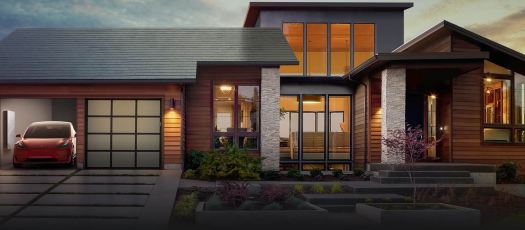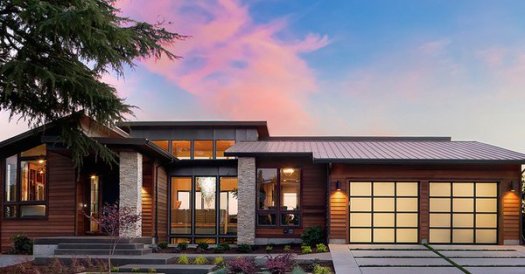
I’ve outlined why rooftop solar is currently uneconomic in most parts of the country, and would never be competitive with utility-scale solar (large installations built and maintained by companies) without the political choice to subsidize it either directly (rebates, tax credits) or indirectly (tariff schemes that favor it by in effect paying solar owners retail price for wholesale power.)
TechCrunch in the 2-22-19 article by Mark Harris (@meharris) describes Solar City/Tesla’s “astroturfing” efforts. Astroturfing implies special interests funding a group that appears to be more broad-based while lobbying, so it doesn’t quite fit here — Tesla’s advocacy group purports to include other solar companies but (at least recently) doesn’t pretend to represent citizens or users in general, as in true astroturfing. But it does fail to disclose its primary sponsor.
Tesla has been masking its lobbying efforts on solar panels and battery storage through the Energy Freedom Coalition of America, a trade association that is little more than a front for the automaker and alternative energy company, public documents suggest.
SolarCity, which Tesla bought in 2016, began the practice of using the EFCA to promote its products and services without acknowledging it was the only significant member of the organization. EFCA was initially portrayed as a solar advocacy group with grassroots support.
When rule changes threatened payments to Arizonans with domestic solar panels in 2016, EFCA knew just what to do. It launched the Arizona Solar Pledge for citizens “to demonstrate their support for energy choice and add their names to the growing coalition determined to protect Arizona rooftop solar customers.”
Anyone signing the petition would “demonstrate to … the broader political community that the people of Arizona stand with rooftop solar and energy choice,” wrote an EFCA spokesperson at the time.
The economics of regulated power utilities are extremely complex. The utilities came to be regulated as natural monopolies by cities, states, then finally at the federal level during the Great Depression. This paper from the U of Texas Energy Institute explains how the current model was developed:
The dominant model for delivering electricity to consumers was, and remains, large-scale, central generation facilities, and transmission and distribution networks at regulated prices (rates) (see Figure 3, Model 1). The traditional utility business model formed within the interplay of technology, finance, and regulation. The business structure was created in the early 20th century as the industry pioneers like Samuel Insull realized that technology allowed for power plants to become larger (especially, using steam turbines) and to reach economies of scale that reduced the unit cost of power. Insull and other early electricity providers also realized that they could make money selling electricity to a more diverse set of customers throughout the day, rather than simply serving evening electricity demand (or “load”), which was the basis of the early electric systems. This realization led them to acquire more customers and to grow their service territories. These large power plants and networks necessitated financing mechanisms, via holding companies with multiple investors or later, access to low-cost financing via the debt markets. These progressively more advanced methods of equity and debt financing enabled new infrastructure (power plants, transmission and distribution lines) to be built and paid for over time, but without all the risk falling on a single company or investor. Regulation was considered necessary to allow electric companies to operate as monopolies to avoid waste of capital resources in duplicate infrastructure, create a regulatory compact that included an obligation to serve within the monopoly service area, stabilize the cost of capital by reducing risk, and provide affordable electricity service. To protect customers from monopolistic prices, electricity rates started to be regulated first by municipal, then by state governments. Federal regulation became relevant when grids grew larger across state borders, thus generating interstate commerce.
[Note, BTW, that Texas’ efforts at deregulation by allowing consumer choice of generating company while keeping the local grid a monopoly was much more successful than California’s, largely because Texas’s legislature was not *as* corrupted by special interests that inserted provisions in the law to favor their games.]
The regulated public utility model worked well enough for decades, but began to fray at the edges as some of its assumptions began to unravel:
— Power no longer needed to be generated near use. Less lossy high-voltage interconnects began to connect larger regions, which allowed power to be sourced from a larger area.
— Sources of power became less reliable as renewables were pushed into the mix, idling baseline capacity.
— Widespread use of AC created an afternoon-early evening peak usage that taxed sources. Lacking short-term storage, peaker plants became more necessary.
Under the old model, utilities either generated most of the power used themselves or contracted with others to supply it. Sourcing was either internal or under long-term supply contract, which generally required a minimum take-or-pay to justify investment.
Politicians began to tinker with this model by favoring some sources over others, notably in recent years setting higher and higher targets for so-called renewables while shutting down nuclear plants and limiting hydro by requiring dams to manage water for downstream ecosystems. Grid management became more challenging, and only a small number of experts understand how to arrange supplies to match instantaneous demand.
The push for more renewables and less nuclear has gone beyond the point of diminishing returns, destabilizing the grid and increasing rates to all consumers and businesses. The situation in California is now worse than in any other state, after a disastrously mishandled “deregulation” effort bankrupted utilities and saddled the state with expensive power contracts for a decade. Beset from all sides by renewables mandates, restrictions on infrastructure spending, and requirements to trim brush for fire suppression while local NIMBYs protested tree trimming, utility managements grew less able to accomplish their core goals as a culture of complacency set in.
The recent disastrous fires and the natural gas incidents (San Bruno pipeline explosion, Aliso Canyon underground storage reservoir leak) devastated communities and cost $billions in damages. Yet the state’s utility regulators have no choice but to jack up rates further to recapitalize the bankrupt utilities. They are now wholly-owned creatures of the state, and no investors will step up to fund them without guarantees.
The PG&E bankruptcy is the first among many for this round. From the Chron 2-22-19 story by Taryn Luna, “California legislators want final say on utility bill increases following PG&E’s bankruptcy filing”:
California lawmakers would carve out a key role for themselves in the bankruptcy of Pacific Gas and Electric Co. under a proposal introduced Friday in the Legislature. The legislation marks the latest attempt by state officials to intervene in the reorganization of California’s largest utility, a process playing out in federal court that legislators fear could lead to higher bills for customers and leave wildfire victims uncompensated for losses.
The proposal would require the California Public Utilities Commission to seek approval from the Legislature for any increase in PG&E’s electricity rates. Customers took on the burden of billions of dollars in rate hikes after PG&E last filed for bankruptcy in 2001. “In effect, this requirement gives the Legislature a say in how the reorganization impacts PG&E customers — who otherwise would have no representation in any consideration of rate changes,” said Sen. Jerry Hill (D-San Mateo), who introduced the bill.
PG&E cited some $30 billion in legal liability when it filed for bankruptcy protection in late January. The filing came after state investigators found the company’s equipment sparked dozens of wildfires in recent years, in some cases because of negligence. Under Chapter 11 bankruptcy, the company will continue to operate as it develops a plan to pay off debts. The situation has frustrated California lawmakers, who spent months last year passing a bill to help offset PG&E’s legal liability for damages. Now legislators and ratepayer advocates are concerned that customers won’t have a voice in the bankruptcy case and may see electricity bills increase dramatically under the reorganization.
Hill’s office said the CPUC approved an 11 % return on equity for PG&E, secured through rate hikes, to improve the company’s credit rating more than a decade ago after the last bankruptcy. At the same time, the agency sanctioned nearly $8 billion in new financing that also fell on customers in addition to $4 billion approved before the filing. Mark Toney, executive director of the Utility Reform Network, said the rate hikes resulted in bill increases of about $1,500 per customer over the course of nearly a decade.
The moral of this disaster is that political micromanagement of utilities and energy policy has done very little to combat climate change (cheap natural gas from fracking, also opposed by renewables advocates, has done much more.) But it has made power more unreliable and expensive, hurting consumers and businesses, most notably the less wealthy inland regions requiring more AC and where manufacturing employment is fleeing California.
Subsidies for rooftop solar and EVs in the $billions have mostly helped wealthy consumers buy shiny status goods. Loans and grants to big projects have similarly been wasted as politically-connected insiders take the money and run, leaving the white elephant plants behind in bankruptcy.
Every complex system set up to “manage” energy policy for some greater purpose than providing reliable power at the lowest cost will be gamed by the bootleggers who know how to get laws and regulations written to favor their looting. The proponents will exit with their ill-gotten gains leaving the rest of us to pay. Voters did this to themselves, it’s true, by favoring politicians who promised to Do Something about climate change. But the pain will be wasted if the lesson is not learned: don’t elect people and parties who offer more of the same quack medicine.
More on solar and Tesla topics:
The Story of Solar City’s Takeover.













